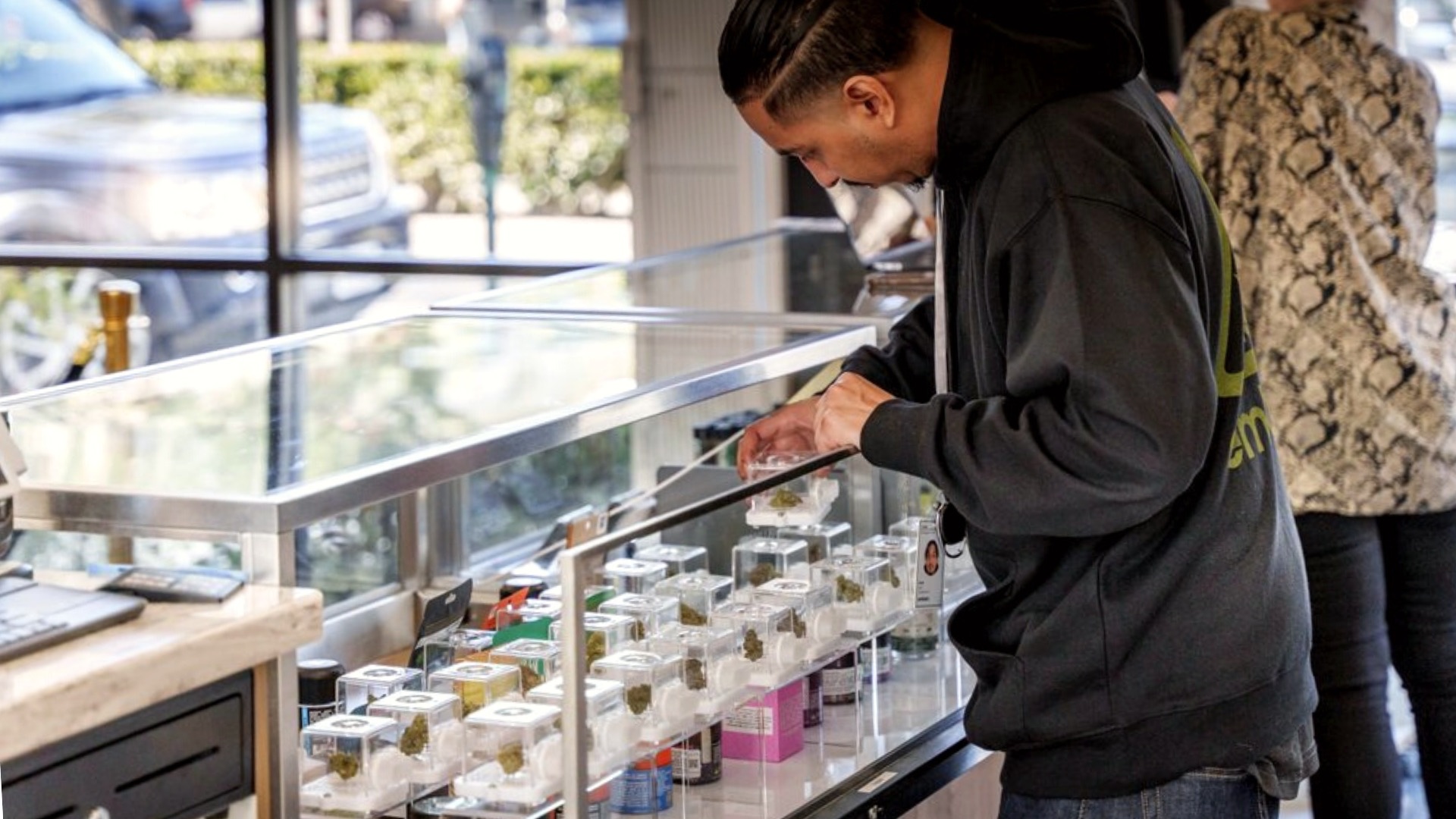Tetrahydrocannabinol, or THC, is one of the many cannabinoids found in the cannabis plant. It’s the compound primarily responsible for the psychoactive effects or the ‘high’ that cannabis is known for. When you consume cannabis, THC interacts with your body’s endocannabinoid system, a complex network of receptors that regulate various physiological processes like mood, appetite, pain, and memory.
However, several misconceptions about THC need to be debunked. The most common one is that a higher THC percentage will result in a stronger or better high. While it’s true that THC is the main psychoactive component, the cannabis experience is influenced by a variety of factors, not just THC. The strain type, the presence of other cannabinoids and terpenes, and even your own body’s chemistry can all impact how you experience cannabis.
THC percentage is a measure of the amount of THC in a cannabis product relative to its total weight. It’s usually displayed on cannabis product labels as a way to indicate the product’s potency. For example, a flower with a THC% of 18% contains 180 milligrams of THC per gram.
However, it’s important to note that THC% is not a definitive measure of a product’s potency. Two products with the same THC% can produce different effects due to variations in the product’s chemical composition, including the presence of other cannabinoids and terpenes.
While THC% can provide some insight into a product’s potency, it’s not a comprehensive measure of the product’s quality or the experience it can provide. Other factors, such as the presence of other cannabinoids and terpenes, can significantly influence the overall cannabis experience.
This is where the concept of the ‘entourage effect’ comes into play. The entourage effect refers to the synergistic interaction between the various compounds in cannabis. In other words, the effects of cannabis are not just due to THC or any single compound, but the combined effects of all its compounds working together.
For example, CBD, another cannabinoid, is known to modulate the effects of THC, potentially reducing its psychoactive effects while enhancing its therapeutic benefits. Similarly, terpenes, the aromatic compounds in cannabis, can also interact with cannabinoids to influence the overall cannabis experience.

While THC percentage can provide a snapshot of a product’s potency, it doesn’t paint the full picture of the cannabis experience. To truly appreciate and understand cannabis, it’s essential to consider other factors such as the presence of other cannabinoids, the role of terpenes, and the type of product you’re consuming.
Cannabis is a complex plant that contains over a hundred different cannabinoids, each with its own unique properties and effects. While THC is the most well-known, other cannabinoids like CBD (cannabidiol), CBG (cannabigerol), and CBN (cannabinol) also play significant roles.
For instance, CBD is a non-psychoactive cannabinoid that’s gained popularity for its potential therapeutic benefits, including anti-inflammatory, analgesic, and anti-anxiety properties. Similarly, CBG is being studied for its potential anti-cancer properties, while CBN is known for its sedative effects.
By focusing solely on THC%, you might be missing out on the potential benefits these other cannabinoids can offer. A balanced cannabinoid profile often provides a more well-rounded and satisfying cannabis experience.
Terpenes are aromatic compounds found in many plants, including cannabis. They’re responsible for the distinct aroma and flavor profiles of different cannabis strains – from the citrusy scent of Lemon Haze to the earthy aroma of OG Kush.
But terpenes do more than just provide aroma and flavor. They can also influence the cannabis experience through their interaction with cannabinoids, a phenomenon known as the ‘entourage effect.’ For example, the terpene myrcene is known to enhance the psychoactive effects of THC, while limonene can elevate mood and relieve stress.
Understanding the terpene profile of a cannabis product can help you predict the effects it might have and choose a product that aligns with your desired experience.
The type of cannabis product you choose can also significantly affect your experience. For example, smoking or vaping flower provides a different experience compared to consuming edibles or using tinctures.
Flower is often preferred for its immediate onset and control over dosage, while edibles offer a longer-lasting and more intense experience. Concentrates, on the other hand, offer a potent and fast-acting option for more experienced consumers.
Each product type has its own unique properties and uses, and understanding these can help you choose a product that best suits your needs and preferences.

Reducing cannabis to a single number – the THC percentage – does a disservice to the plant and the consumer alike. While THC% can provide a glimpse into a product’s potency, it’s far from the whole story.
When shopping for cannabis, it’s essential to look beyond THC% and consider other factors that can significantly influence your experience. This includes the presence of other cannabinoids, the role of terpenes, and the type of product you’re considering. Each of these elements contributes to the overall cannabis experience in its own unique way.
While THC% can be a useful tool, it’s not the be-all and end-all of cannabis shopping. By taking a more holistic approach and considering all the factors that contribute to the cannabis experience, you can find products that truly meet your needs and enhance your enjoyment of this remarkable plant.
